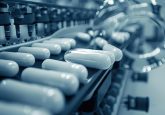8. What are the challenges for demonstrating that immunogenicity risks for the biosimilar are less or equivalent to the innovator material?

Fernando de Mora: “The aim is to demonstrate equivalent immunogenicity, but a lower immunogenicity for the biosimilar may be accepted if not justified by differences in the molecular structure. The challenge currently is to attempt to develop predictive immunogenicity studies before reaching the clinical phase. Currently, the most reliable way to assess immunogenicity are clinical trials. That is the measurement of anti-drug antibodies in treated patients. This is challenging because many patients are usually needed for long-lasting studies. If there was a way to accurately anticipate immunogenicity before entering human studies, it would probably allow for faster and less expensive developments.”
Arno Kromminga: “The development and validation of an ADA assay should not be underestimated in this field and the similarity should be defined prior to the start of the assessment. Also, the ADA assay needs to be robust to avoid unnecessarily high imprecisions.”
Paul Declerck: “Immunogenicity cannot be evaluated in the preclinical phase since animal models have no predictive value with respect to immunogenicity in humans. In most cases at the time of approval of a biosimilar, only limited data on immunogenicity are available and are not sufficient to draw solid conclusions. This is also evident from the European Public Assessment Reports of approved biosimilars. So only long term data may possibly demonstrate if there are significant differences in immunogenicity.”
Christina Satterwhite: “The most conservative approach for the immunogenicity assessment is to use the biosimilar reagents for the ADA assay. The one-assay approach using the biosimilar reagents will ensure that the assay can detect any unique antibodies to the biosimilar when comparing the incidence to the originator. The regulatory agencies require that the biosimilar is ‘no more immunogenic’. The challenge is in determining what criteria should be used to demonstrate that the biosimilar immunogenicity incidence and magnitude of the antibody response does not result in any increased risk to patients.”
References:
*S. Department of Health and Human Services. Food and Drug Administration. Center for Drug Evaluation and Research (CDER). Center for Biologics Evaluation and Research (CBER). Assay Development and Validation for Immunogenicity Testing of Therapeutic Protein Products. April 2016
*S. Department of Health and Human Services. Food and Drug Administration. Center for Drug Evaluation and Research (CDER). Center for Biologics Evaluation and Research (CBER). Quality considerations in demonstrating biosimilarity to a reference protein product. April 2015.
*S. Department of Health and Human Services. Food and Drug Administration. Center for Drug Evaluation and Research (CDER). Center for Biologics Evaluation and Research (CBER). Scientific Considerations in Demonstrating Biosimilarity to a Reference Product. April 2015.
*European Medicines Agency. EMEA/CHMP/BMWP/42832/2005 Rev1. Guideline on similar biological medicinal products containing biotechnology-derived proteins as active substance: non-clinical and clinical






